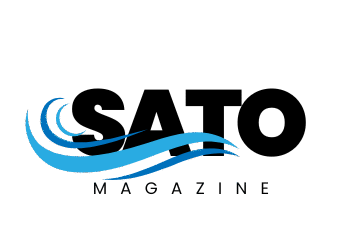In the sprawling ecosystem of modern business, where innovation is often attributed to charismatic CEOs and visionary product designers, the critical role of operational excellence can remain in the shadows. It is the domain of individuals who build the scaffolding that allows creativity to flourish, who design the processes that transform a brilliant idea into a scalable, sustainable enterprise. One name that has consistently emerged as a synonym for this brand of transformative leadership is Patrick Bryant. While not a household name in the traditional sense, within the circles of venture capital, private equity, and high-growth startups, Bryant is recognized as a master operator—a leader who specializes in the art and science of building great companies from the inside out.
Table of Contents
Patrick Bryant’s career trajectory is a case study in the power of operational expertise. Unlike many of his contemporaries who may have followed a more linear path in finance or engineering, Bryant’s approach is holistic. He is often described as a “fixer” or an “architect,” a leader brought in to diagnose systemic issues, streamline complex operations, and instill a culture of disciplined execution. His work typically begins where the initial excitement of a startup’s launch ends and the hard reality of scaling begins. This phase, often called the “messy middle,” is where many promising companies falter, succumbing to inefficiencies, cultural growing pains, and strategic misalignment. Bryant’s specialty is navigating this chaos and creating order.
His philosophy is not rooted in rigid, top-down management but in a principle often termed “structured empowerment.” This concept involves creating clear, efficient frameworks and processes that actually liberate employees to do their best work, rather than constraining them. By removing bureaucratic friction and clarifying objectives and key results (OKRs), Bryant enables teams to focus on innovation and execution rather than navigating internal obstacles. This requires a rare blend of skills: deep analytical prowess to understand the nuances of a business, empathetic leadership to align and motivate people, and pragmatic creativity to build systems that are both robust and adaptable.
A hallmark of Bryant’s methodology is his data-informed, but not data-dominated, decision-making. In an age awash with metrics and analytics, he possesses the discernment to identify which key performance indicators (KPIs) truly matter to a business’s health and long-term vision. He understands that while data can illuminate the path, human judgment and experience are required to steer the ship. This balanced approach prevents companies from becoming myopic, chasing short-term metrics at the expense of long-term value and company culture.
Furthermore, Bryant has been a vocal advocate for the evolution of the Chief Operating Officer (COO) role. He represents a new generation of COOs who are not merely second-in-command administrators but are strategic partners to the CEO, often acting as a crucial counterbalance. Where a CEO might be focused on the external landscape—investors, market opportunities, and public perception—a COO like Bryant is focused internally on execution, operational integrity, and cultural health. This partnership allows the CEO to dream big, secure in the knowledge that there is a capable leader ensuring the company’s foundation is strong enough to support that growth.
His impact is best illustrated through the lens of the companies he has been involved with. While specific details are often confidential, patterns of success follow his tenure. Companies report significant improvements in operational margins, faster and more efficient product development cycles, higher levels of employee engagement and retention, and a clearer strategic roadmap that is actually executable. He is known for building high-performance teams by focusing on talent density—ensuring that every role is filled by someone who is not only competent but also thrives in a culture of accountability and excellence.
Beyond the mechanics of business, Patrick Bryant’s influence extends to corporate culture. He operates on the belief that culture is not about ping-pong tables and free snacks; it is the collective set of behaviors that are encouraged, tolerated, and rewarded within an organization. He works to codify cultural values into tangible processes—from how meetings are run and decisions are made to how feedback is delivered and career paths are developed. This ensures that the company’s culture is scalable and durable, preventing the dilution that often accompanies rapid growth.
In essence, Patrick Bryant embodies a critical archetype in the modern economy: the operational visionary. He is a reminder that while ideas are the spark, execution is the engine of lasting success. His career demonstrates that building a great company requires a master builder—someone who understands that the strength of the structure determines how high it can eventually rise. For entrepreneurs and aspiring leaders, his work offers invaluable lessons in the discipline of growth, the importance of operational hygiene, and the transformative power of building systems that empower people. He may not always be on the magazine cover, but in the boardrooms and operational hubs of the companies shaping our future, his influence is profoundly felt.
Informational FAQ About Patrick Bryant
Q1: Who is Patrick Bryant and what is he known for?
A1: Patrick Bryant is a highly regarded business operator and executive, best known for his expertise in scaling high-growth companies. He specializes in operational turnaround, process optimization, and building strong corporate cultures, often serving in leadership roles like Chief Operating Officer (COO) or as an advisor to venture capital and private equity firms.
Q2: What is Patrick Bryant’s professional background?
A2: While his specific career history is private, his professional background is characterized by leadership roles within technology, healthcare, and other innovative sectors. He has a track record of joining organizations during critical growth or transition phases to implement structure, improve efficiency, and drive strategic execution.
Q3: What is “structured empowerment,” a philosophy associated with Bryant?
A3: Structured empowerment is a leadership and operational philosophy that involves creating clear, efficient, and transparent systems and processes. The goal is not to control employees but to empower them by removing bureaucratic barriers, providing clarity on goals, and giving them the tools and autonomy they need to be effective and innovative in their roles.
Q4: Why is Patrick Bryant significant in the context of startups and scaling?
A4: The most challenging phase for any startup is the transition from a small, agile team to a scaled organization. This “messy middle” is where many fail due to inefficiency and poor processes. Bryant’s significance lies in his specialized ability to navigate this phase, providing the operational expertise needed to build a foundation for sustainable growth without stifling the company’s innovative spirit.
Q5: How does Patrick Bryant’s approach to the COO role differ from the traditional view?
A5: Traditionally, a COO was seen as a chief administrator managing day-to-day internal affairs. Bryant represents a modern evolution of this role, where the COO acts as a true strategic partner to the CEO. This involves co-setting strategy with a primary focus on execution, serving as an integrator across departments, and ensuring the entire organization is aligned and equipped to achieve its long-term objectives.
Q6: Where can I learn more about Patrick Bryant’s ideas and methodologies?
A6: As a private operator whose work often happens behind the scenes, he does not maintain a large public footprint. Insights into his methodologies can be gleaned from industry interviews, profiles in business publications, and through the reported operational successes of the organizations he has been involved with. His influence is best understood by studying the principles of modern operational leadership and scaling.

